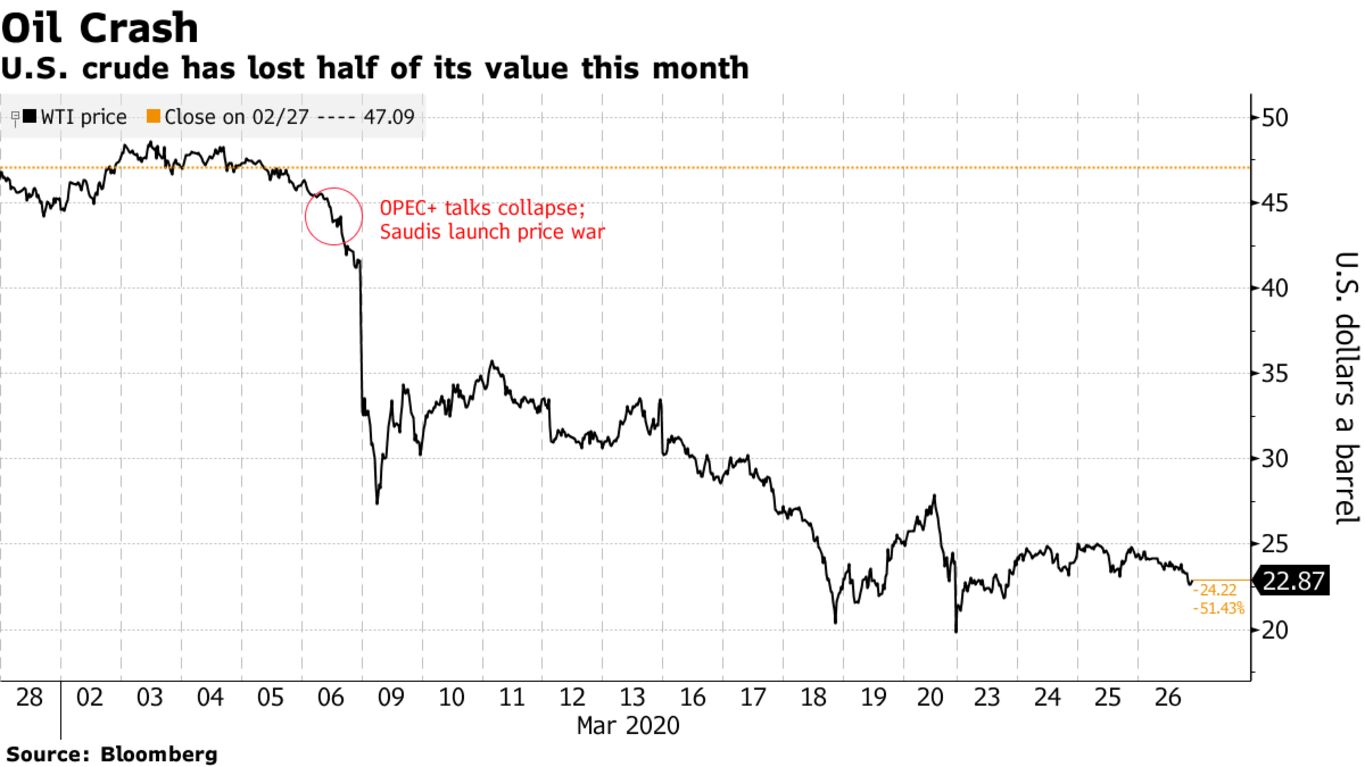When Saudi Arabia kicked off its oil-price war and triggered the worst crude crash in a generation, U.S. President Donald Trump lauded the ensuing decline in pump prices, saying it would be “like a tax cut” for Americans. Weeks later, the crisis remains a low priority for the president, who has continually expressed his satisfaction with cheap gasoline and whose agenda has been consumed by the coronavirus pandemic itself, according to people familiar with the situation. While Secretary of State Mike Pompeo on Wednesday took the strongest action yet to calm the market — pressing Saudi Arabia to dial back its production surge — the kingdom has shown no signs of slowing down.
Now, with thousands of oil jobs hanging in the balance and the U.S. shale industry in upheaval, any action by Trump himself may be too little, too late. Oil’s downturn has rapidly devolved from a simple case of too much supply to a worst-case scenario of total demand destruction — a problem far harder to solve from the Oval Office. “The window for Trump to pressure the Saudis and/or Russians to cut oil supply may have closed last week,” said Ellen Wald, a nonresident senior fellow at the Atlantic Council. “Now, with most of Europe, the United States and India shutting down their economies and issuing stay-at-home directives, collapsing demand is the big story.”

Pompeo’s latest intervention helped to modestly and briefly lift prices, but did nothing to change the outlook on demand, which is disintegrating at a record pace as virus-related lockdowns halt transit across the globe. At this point, higher oil prices could further imperil refiners, responsible for churning out the cheap gasoline Trump prizes.
